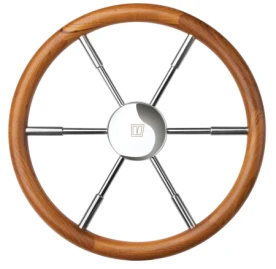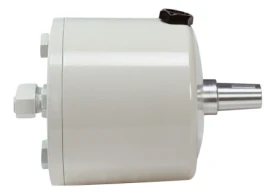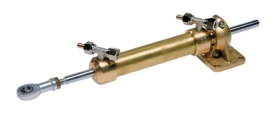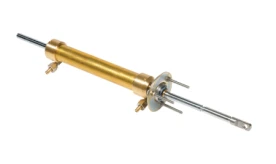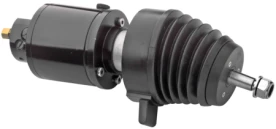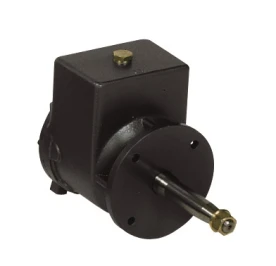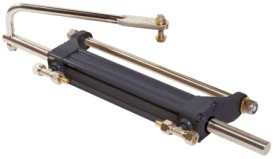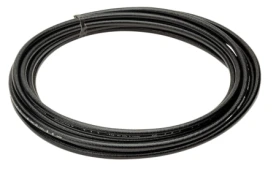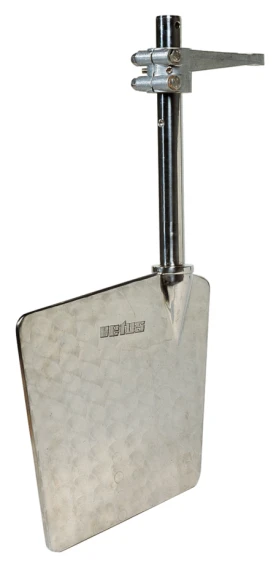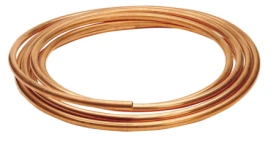Steering Systems
How to determine the correct VETUS steering
Various combinations of boat speed, rudder blade surface area and balance sections apply a variety of forces on steering systems. In addition, the dynamic influences of wind and currents are a constant consideration, placing a significant burden upon steering systems when conditions are harsh.
A skipper is dependent upon his vessel’s steering system, so it imperative that this is reliable under any and all circumstances. The design of the steering system will determine how rapidly a vessel responds to helm movements. Fast, light boats react quickly to small rudder movements, while slow, heavy-displacement boats will usually be set up to require more wheel movement for a given change of course. It is therefore essential to carry out a careful and thorough calculation to determine the optimal steering system for any particular vessel.
Rudder torque
The choice of the correct cylinder is verified via the vessel’s rudder torque in Nm (or kg). The rudder torque is the determining factor (Torque = force x lever). To ascertain the correct rudder torque, only the maximum speed of the boat, the surface area of the rudder blade and the maximum rudder angle (in degrees) are of importance. Information such as length of boat and engine power are irrelevant. With a few exceptions, the rudder performs best with a maximum rudder angle of 35º to either side. Contrary to what is sometimes claimed for rudders with normal dimensions, a larger rudder angle does not enhance the manoeuvring capabilities of a boat.
Your VETUS dealer will be pleased to provide you with recommendations for all steering system components, based on the maximum speed of the boat and a dimensioned sketch or the rudder (provided by you).

